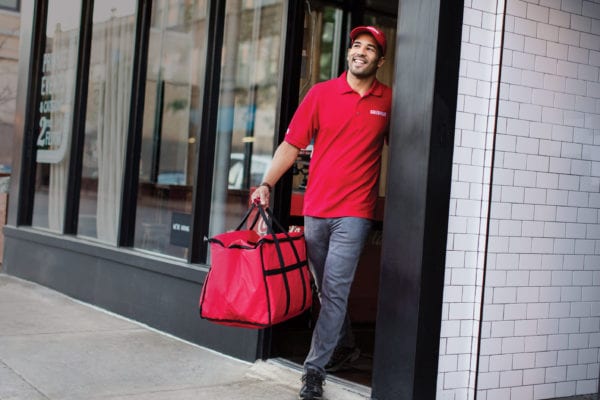Skift Take
Scaling up is great for the service, but it's not immune to growing pains along the way.
— Erika Adams
The dog days of summer have not registered at Waitr, the food delivery service that billionaire Houston Rockets owner Tilman Fertitta snapped up in May for $308 million. He bought it through Landcadia Holdings, a public blank check company created to strike a deal like this when Fertitta was ready to pull the trigger.
Even though the deal hasn’t fully gone through yet, bits and pieces of Waitr’s business model are becoming public as part of the merger process. One recent bit? Waitr’s updated investor deck, filed as part of Landcadia’s latest quarterly report.
The expansion track they’re on this summer shows how serious management is about scaling up, quickly. Here’s all the new markets that Waitr (still a very small operation compared to the one other publicly traded third-party delivery service, Grubhub) has entered in the past month, as per regular announcements pushed out on its Facebook page:
- July 12: New Iberia, Louisiana
- July 19: Warner Roberts, Georgia and Galveston, Texas
- July 26: Hattiesburg, Mississippi
- August 2: Simpsonville, South Carolina
- August 9: Auburn, Alabama
Its strategy is to dominate first in second- and third-tier markets across the U.S, where it targets primarily full-service restaurants. Waitr has an average order value of $35 and average net revenue per order of $10.
Every time Waitr opens in a new market, it requires a $200,000 investment on average to get up and running in that location, according to the filing. At launch, Waitr aims for at least 40 restaurant partnerships and a one-to-one driver to restaurant ratio. Each new market gets a city manager to oversee driver operations, and Waitr prides itself on hiring the majority of its drivers not as contract workers but as W-2 categorized employees.
Once it’s open for business, Waitr starts generating 100 orders per day within the first week. The company starts to break even around 350 orders per day, and, according to the filing, Waitr can churn out 1,000 orders or more per day within one to three months. It’s in Waitr’s best interest to pump out as many orders as it can as fast as possible because its average 30 percent gross profit margin only gets stronger with more orders, both from repeat customers and from entering new markets.
It’s not easy to get that all up and running smoothly on a weekly basis, and there’s been a pile-on of angry customer reviews left in the past month to prove it.
In response, the company said, in part, that “we, like every company that connects with consumers on some level, are constantly striving to perform optimally and exceed expectations. Sometimes, we fall short, and we do everything in our power to make it right.”
Regardless, Waitr’s expansion pace won’t be slowing down anytime soon. The merger between Landcadia and Waitr is expected to be completed by the end of the year, at which point Landcadia will morph into Waitr Holdings, Inc., and the delivery service will become a publicly traded company.






